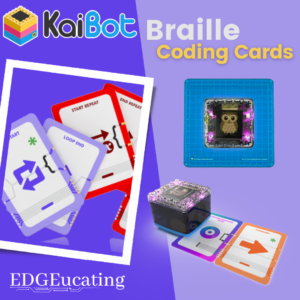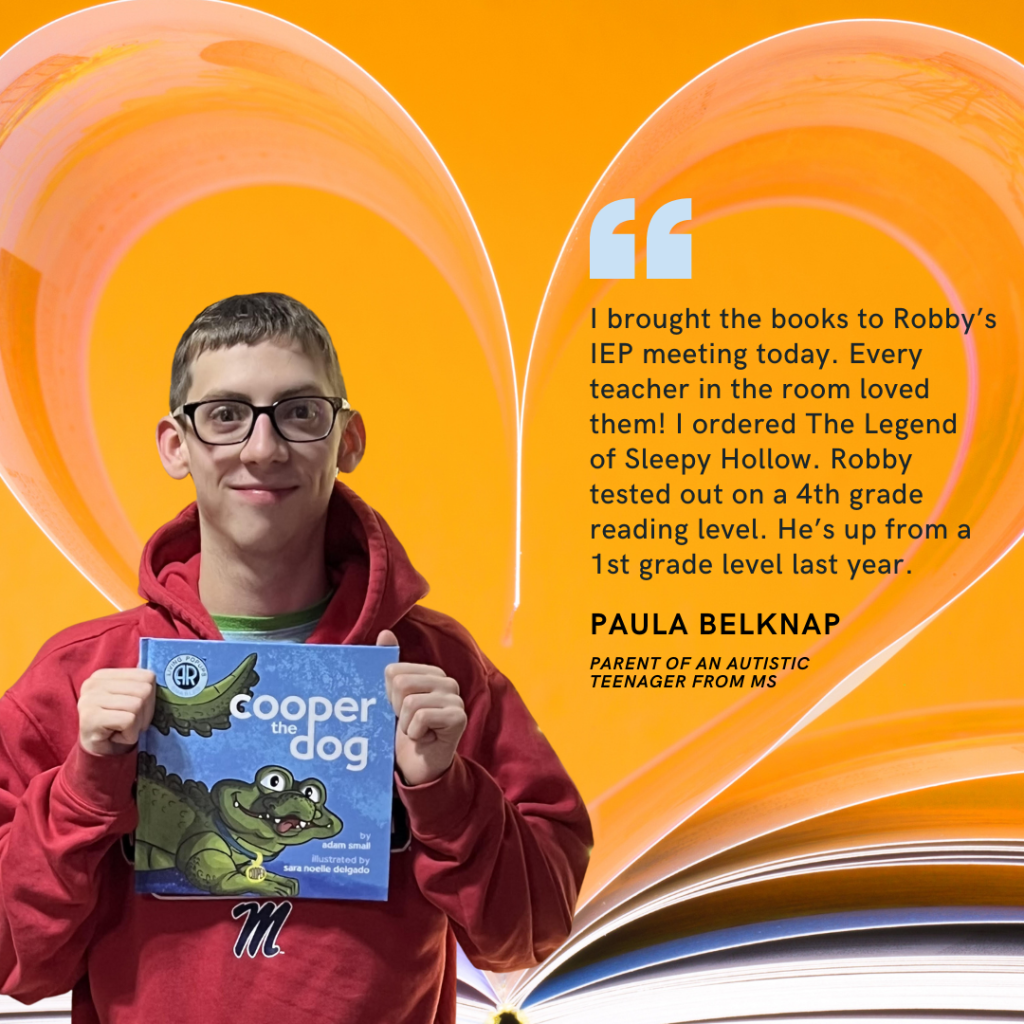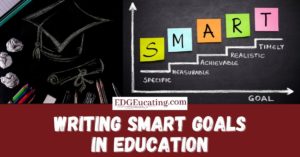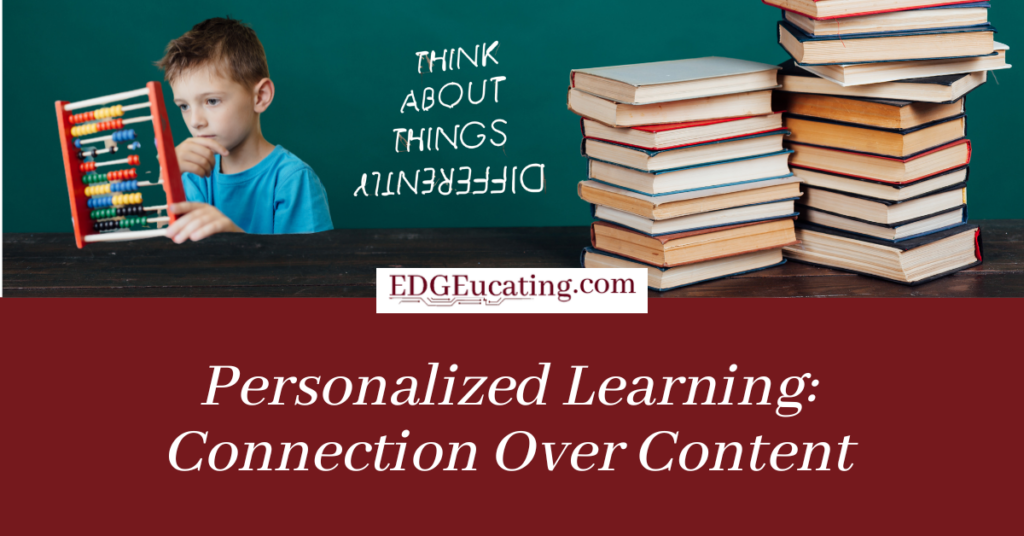In recent years, we have come to recognize that the traditional one-size-fits-all approach to education is no longer effective in meeting the diverse needs and learning styles of our students. Many students feel left behind and disengaged in the traditional classroom setting. It is time for us to prioritize the connection with our students over the content we teach. Their needs must be considered before teaching content.
To address this challenge, personalized learning strategies and adaptive learning approaches have gained popularity among educators. This approach tailors instruction to meet the specific needs and interests of individual students, and it’s not just for students who fall under the special education umbrella. It should be the goal for every student.
Going Beyond Social-Emotional Learning (SEL)
Personalized learning goes beyond the scope of basic Social-Emotional Learning (SEL) initiatives. While SEL is effective in promoting positive outcomes for students, it often fails to address the unique needs of students who learn differently. We need to incorporate learning strategies and tools, including adaptive learning, that effectively support ALL students.
 The Role of Adaptive Technology Tools and Resources
The Role of Adaptive Technology Tools and Resources
Adaptive learning technology tools and resources can play a crucial role in personalized learning. Consider products like KaiBot, Readeezy, LP Bookspace, Glow, Cube, imagi, and the Career in STEM explorer platform.
KaiBot offers adaptive technology features specifically designed for blind students. This technology empowers blind students the opportunity to explore coding, physical computing, and computational thinking through the use of Braille coding cards and adaptive speech technology which informs of the bots coding execution. These expertly designed cards and adaptive speech options convey coding principles tactically and verbally, enabling blind students to understand algorithms through touch and hearing, promoting equal participation and engagement.
Promoting Equal Participation and Engagement
Readeezy and LP Bookspace are programs that focus on students with learning differences. Readeezy is a digital book series with interactive features dedicated to young adults who learn differently or are reluctant readers. This interactive platform aligns closely with adaptive learning principles, allowing for breaks, offering a read-aloud option, and providing books with content that is challenging enough to help strengthen reading comprehension.
LP Bookspace offers an extensive digital library that adapts to student reading levels, fostering literacy growth while encouraging student engagement. With interactive tools that help students track progress and access books that meet their interests, LP Bookspace empowers struggling and reluctant readers to succeed. See Robby’s testimonial below.

High-Performing Students and Social-Emotional Intelligence
We often don’t think about high-performing students struggling with social-emotional intelligence when planning our lessons. However, as a tenured gifted education teacher, it is my experience that these students often struggle in class to behave as they are expected due to a lack of engagement, interest, or social interaction issues. Therefore, providing these and other students with tools that help them feel more engaged and empowered can make all the difference in both their mental health and their learning.
Safe Exploration Opportunities for Underserved Populations
For underserved populations, products like imagi and Career in STEM can create safe environments for exploration. Imagi is a coding charm that uses non-threatening pixel art to spark interest in coding among kids aged 8-14+, particularly engaging girls and helping close the gender gap in Tech.
Career in STEM is a unique, inclusive platform designed to help students see the tremendous variety and opportunities in STEM careers. This platform is particularly important for underserved populations who may not be aware of the opportunities available to them. It offers over 200 exciting career profiles that are aligned with National Career Clusters with job shadow videos & hands-on activities. By utilizing inventories, activities, condensed research, data, videos, and lessons middle school and high school students are able to discover careers and build a future they never imagined possible!
Glow and Cube provide immersive and interactive assistive technology solutions designed to engage students across subjects. These tools encourage creativity, coding, and collaboration, helping students build critical 21st-century skills while boosting student engagement through hands-on experiences. They can be especially powerful when paired with robotics in SEL. For more on this, see our article Empowering Students Through Robotics and Social-Emotional Learning.
These opportunities not only expand career awareness but also reinforce essential 21st century skills such as critical thinking, collaboration, and creativity—skills that carry over to every subject area.
Using SMART Goals for Ownership of Learning and Motivation
Incorporating SEL learning is essential for student well-being. Setting SMART goals can enhance this process. SMART goals provide a framework for students to set specific, measurable, attainable, relevant, and time-bound objectives. Encouraging students to set SMART goals helps them take ownership of their learning, track progress, and remain motivated. You can find more information about setting SMART goals in my article Writing SMART Goals in Education.

Art & Creativity in Adaptive Learning
Personalized and adaptive learning isn’t limited to STEM subjects—it also extends to the arts. Creative projects give students opportunities to explore identity, problem-solving, and collaboration, all while strengthening student engagement.
Tools like Makey Makey bridge the gap between art and technology, allowing students to design interactive projects that combine coding, music, and creative expression. Teachers often use Makey Makey in cross-curricular projects, making it a powerful addition to innovative teaching strategies that connect art, science, and technology.
For more ideas on how to integrate art into STEAM, check out our article Integrate Art in STEAM Education.
Striving for Educational Transformation
As we strive for educational transformation, let’s remember the unique needs of students who learn differently and prioritize their social-emotional well-being. We need a comprehensive “climate change” in education to create a system that caters to all students, ensuring their success and well-being. By embracing adaptive learning strategies, incorporating adaptive technology tools, providing social-emotional support, and promoting the use of SMART goals, we can build an inclusive education system that supports the diverse needs of all learners.
As we prepare students for the future, weaving in tools that promote 21st century skills ensures they graduate ready to thrive in both higher education and the workforce. Together, let’s make personalized and adaptive learning a reality for all our students.


